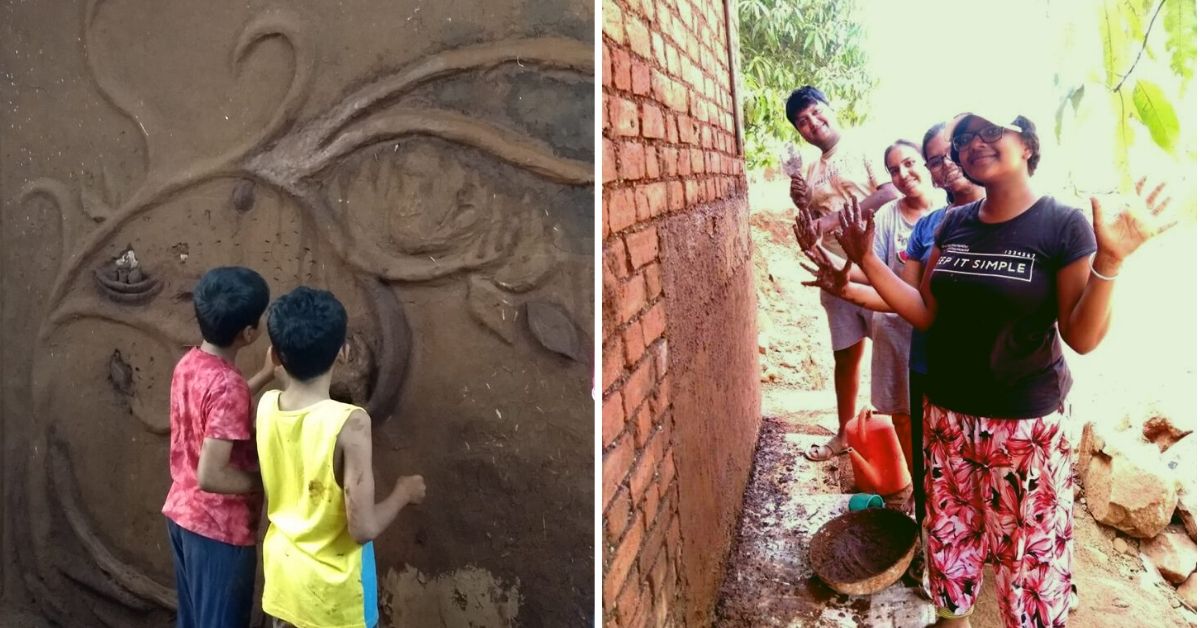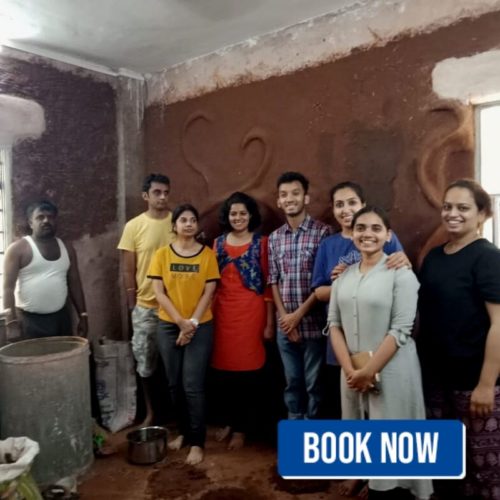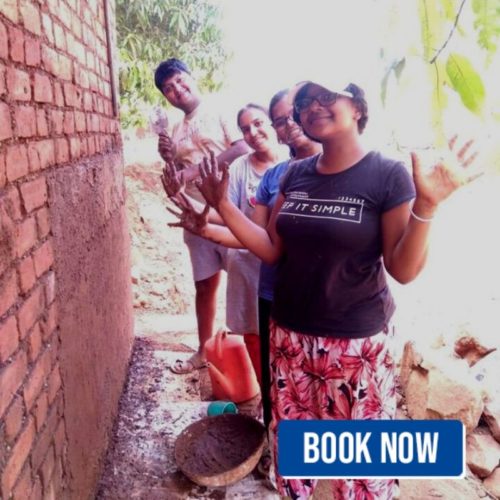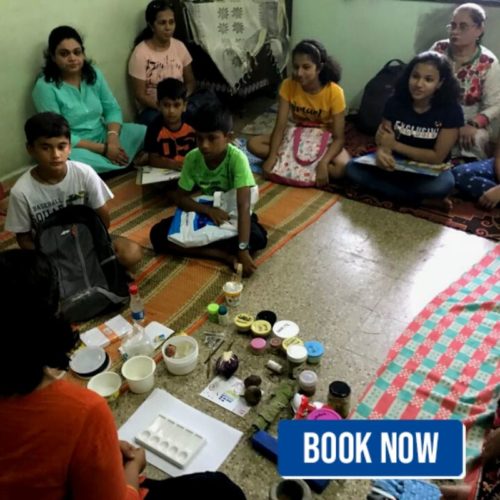How Toxic Are Your Walls? Learn to Make Non-Toxic Wall Paints in This Mumbai Workshop
Within five hours, you can learn to make breathable, earth-friendly paints that will keep you from inhaling toxins.

Think about a freshly painted urban home and you can almost smell that typical petrochemicals-laced air, the fumes causing our eyes to water and making our heads ache. Fun times!
On the other hand, a house in an Indian village is plastered with fresh cow dung. Indeed, this seems like fun too, but not something we can do in the cities.
So is there any middle ground?
Yes! says Dhirty Hands, an architecture firm based in Mumbai. And over the weekend, they will help you make this paint right at home!
Get ready Mumbai, as within five hours, you can learn how to make breathable, earth-friendly paints that will keep you from inhaling toxins.
Ready to make your home safe? Register here for the Mumbai workshop!
Why you must be wary of wall paints:
The Bureau of Indian Standards (BIS) has capped the amount of lead in paints to 90 parts per million. Lead, used as a pigment and also to increase the durability of the paints, is a poison when inhaled or ingested.
This makes it crucial for companies to follow the rules set by the BIS. A study conducted in 2015, made a shocking observation that nearly 31 per cent of paints available in the market (32 out of 101 tested) had lead concentration of 10,000 parts per million!
Minor lead poisoning can lead to abdominal pain, constipation and headaches, while severe cases may cause anaemia or damage to kidneys and the brain.
Anushree Tendolkar, the founder of Dhirty Hands, tells The Better India (TBI), “The paints we get in the market are petroleum-based and toxic when inhaled. These toxins cause your head to hurt when you stand in a recently-painted room. The strong smell fades within 7-10 days but the toxins don’t. In fact, they keep breaking down over a period of time and unknown to you, are present in the air you breathe indoors.”
Apart from lead, paints also contain Methylene chloride (may cause dermatitis), glycol (a skin irritant), xylene (causes headaches, dizziness) and benzene (a potential carcinogen) among other toxic elements.
Make your home a safe space to live in. Attend this Mumbai workshop and learn how to make clay and limestone-based paints. Click here to book your place.
What to expect in the Mumbai workshop:
Anushree was inspired by the concept of sustainable homes when she was studying to become an architect. Taking this motivation forward, she worked with Thannal, a Tamil Nadu organisation that makes mud houses a practical reality in cities (you can read about them here).
After two years of helping build eco-friendly homes and undertaking workshops in the same field with Thannal, Anushree wanted to spread their work in her home, Mumbai.
“Here, I established Dhirty Hands for those who want to live in an eco-friendly space,” says the 28-year-old. She adds that apart from taking up full-fledged architectural projects, the Mumbai firm also conducts workshops to empower people with the ability to build earth-friendly homes.
This weekend, they are focusing on eco-friendly paints.
In the 5-hour workshop, you will learn to make limestone and clay-based paints. “You will realise that these paints cause no headaches even while you make them. Same is the case when you apply the coat. Add plant-based pigmentations like indigo for blue, Palash leaves for yellow shades and turmeric for red colour and you have bright paints that are non-toxic and last almost as much as their chemical-based counterparts,” the Mumbai architect shares with TBI.
The workshop will teach you everything including the chemistry of paint, the process of making it and the maintenance, (it may take 2-3 more days to complete the painting process and just like with chemical paints, you will have to apply a fresh paint every few years).
Anushree says that since limestone is breathable, it does not flake like conventional paints. “Our studio has limestone paints and we have undertaken four other projects so far. Limestone paints can be a good beginning for a toxin-free home,” she adds.
In just 5 hours and Rs 1200, you can have a safe haven, free of poisons!
Mumbai, what are you waiting for? Click here to book your seats now!
Also Read: 13 Reasons Why a Little Nutmeg Will Improve Your Health, Skin and Hair!
(Edited by Saiqua Sultan)
Feature image source: Dhirty Hands/ Facebook.
Like this story? Or have something to share? Write to us: [email protected], or connect with us on Facebook and Twitter.
If you found our stories insightful, informative, or even just enjoyable, we invite you to consider making a voluntary payment to support the work we do at The Better India. Your contribution helps us continue producing quality content that educates, inspires, and drives positive change.
Choose one of the payment options below for your contribution-
By paying for the stories you value, you directly contribute to sustaining our efforts focused on making a difference in the world. Together, let’s ensure that impactful stories continue to be told and shared, enriching lives and communities alike.
Thank you for your support. Here are some frequently asked questions you might find helpful to know why you are contributing?


This story made me
-
97
-
121
-
89
-
167















